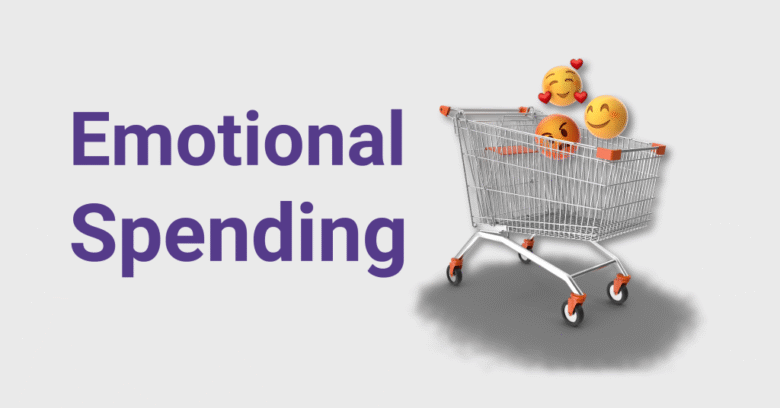Every now and then, we all make impulse purchases. It could be to reward ourselves for a good day or to treat ourselves to a luxurious item. What happens when emotional buying becomes a regular habit? Emotional purchases are often more expensive than planned ones, leading to debt, buyer’s regret, and long-term instability. This silent wealth killer dries up bank accounts, sabotages savings plans, and traps people in a vicious cycle of financial stress. The first step in overcoming emotional spending is to understand the psychology. This article will explore the psychology behind emotional spending, how it affects wealth, and practical strategies for regaining control.
The Psychology Behind Emotional Spending
Emotional expenditure is deeply rooted within psychology. Our brain craves instant gratification when we are stressed, lonely, or overly excited. Retail therapy releases dopamine, which creates a temporary high masking underlying emotions. This temporary relief can lead to regrets in the long run. People who shop in order to deal with negative emotions tend to be more likely to rack up credit card debt or struggle to save. It is important to break the cycle by recognizing emotional triggers, such as boredom or anxiety. These patterns can be identified to help individuals develop healthier coping strategies that do not involve using a credit card.
How Emotional Spending Erodes Wealth Over Time
Even small, impulsive purchases can add up. Even a $5 daily coffee, frequent shopping online, or luxury purchases made at the last minute can add up to thousands of dollars per year. Emotional spending can replace intentional investing or saving and delay financial milestones such as homeownership or retirement. Most people are unaware of how much money they are losing until they have a financial emergency. Emotional purchases are rarely worth the money spent. Instead, they create clutter, add to debt, and cause regret. This habit, over time, prevents wealth from accumulating and keeps people in a cycle of paycheck to paycheck.
Social Media and Emotional Spending
Social media increases emotional spending through a constant flow of temptation. Influencers show off their luxury purchases, targeted ads take advantage of personal insecurities, and FOMO (fear of missing out) encourages people to purchase things they do not need. Platforms such as Instagram and TikTok, with their one-click purchases and “limited time offers,” make it easy to spend. According to research, excessive social media usage is associated with impulsive purchasing behavior. To combat this, users should curate their feeds and mute triggering accounts. They can also implement waiting periods prior to making purchases. Reduced screen time will also reduce exposure to marketing tricks.
Signs that you’re a Spender of Emotions
Some red flags can indicate that there is a problem. Do you buy when you are stressed or depressed? Hide purchases from family members? You often regret your purchases shortly afterward. You may also be a spender if you max out your credit card, ignore budgets, or feel rushed when buying unplanned items. Emotional shoppers may use shopping to reward themselves and justify their unnecessary purchases with “self-care.” If you recognize these patterns, it may be time to reassess how you relate to money. The first step to change is awareness.
Strategies for Reducing Emotional Spending
To break the emotional spending habits, you need to use deliberate strategies. The 24-hour rule is an effective way to prevent impulse purchases. Budgeting apps track your spending and can send you alerts if your habits change. To manage emotions, you can also replace shopping with low-cost or free activities like journaling or exercising. Automating your savings eliminates temptation by preventing money from being spent. It can be helpful to seek accountability from a financial friend or therapist in order to overcome deep-seated triggers.
Building a Healthy Money Mindset
The key to financial freedom is aligning your spending with your values and not emotions. Practicing gratitude for what you have already reduces your desire to buy more. Set clear financial goals, such as saving up for a vacation or an early retirement. This will motivate you to resist impulse purchases. Mindfulness techniques such as pausing and asking, “Will my life be better if I make this purchase?” help reinforce intentional spending. These habits will rewire your brain over time to look for fulfillment outside of material possessions. This is the key to sustainable wealth.
Conclusion
Emotional expenditure is not just a bad practice; it’s also a silent threat for financial stability. Anyone can regain control over their finances by understanding psychological triggers, recognizing personal spending patterns, and implementing mindful strategy. It’s important to identify the emotions that are driving impulsive spending and replace them with healthy coping mechanisms. Every small, deliberate choice can add up to a lot of wealth. The journey to financial independence begins with self-awareness and taking disciplined actions. Stop letting your emotions dictate how you spend money. Instead, start building a financial future in which the money is used to serve you.
FAQs
1. What is the difference between emotional and regular spending?
Emotional expenditure is driven more by feelings than by necessity (stress or boredom). This can lead to regrettable, impulsive purchases. Regular spending is aligned to budgets and financial goals.
2. Does emotional spending lead to debts?
It is true that frequent emotional expenditures, especially on credit cards, can quickly lead to debt, high interest payments, and long-term financial strain.
3. How can I determine whether I am an emotional spender or not?
The signs of emotional shopping include hiding purchases, buyer’s regret, and spending beyond your means.
4. What is the best way to reduce emotional spending?
Implement strategies such as the 24-hour rule. Budget tracking. Replace shopping with free activities. Address emotional triggers.
5. Is social media influencing our spending habits?
Absolutely. Social media encourages FOMO and targeted ads, which exploit emotions. Users are more likely to make impulsive purchases because of this. Limiting exposure to social media can reduce unnecessary spending.




